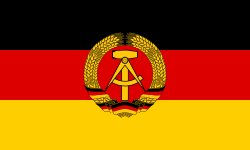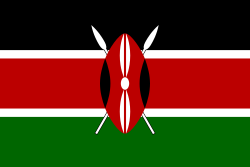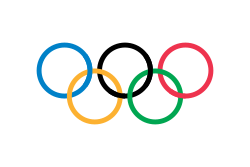Iran i olympiska sommarspelen 1988
| ||||||
| Kommitté | Irans Olympiska Kommitté | |||||
|---|---|---|---|---|---|---|
| Olympiska sommarspelen 1988 i Seoul | ||||||
| Deltagare | 27 deltagare i 4 grenar | |||||
| Fanbärare | Hassan Zahedi | |||||
| ||||||
| ||||||
| Iran i olympiska sommarspelen | ||||||
| 1900 • 1904-1936 • 1948 • 1952 • 1956 • 1960 • 1964 • 1968 • 1972 • 1976 • 1980 • 1984 • 1988 • 1992 • 1996 • 2000 • 2004 • 2008 • 2012 • 2016 • 2020 | ||||||
| Iran i olympiska vinterspelen | ||||||
| 1956 • 1960 • 1964 • 1968 • 1972 • 1976 • 1980-1994 • 1998 • 2002 • 2006 • 2010 • 2014 • 2018 • 2022 | ||||||
Iran deltog i de olympiska sommarspelen 1988 med en trupp bestående av 27 deltagare, och totalt blev det ett silver.
Medaljer
 Silver
Silver
Brottning
- Fristil[1]
| Brottare | Gren | Inledande omgång | Final | Placering | |||||
|---|---|---|---|---|---|---|---|---|---|
| Omgång 1 | Omgång 2 | Omgång 3 | Omgång 4 | Omgång 5 | Omgång 6 / 7 | ||||
| Nasser Zeinalnia | Lätt flugvikt, fristil | W 17–0 | W 4–3 | L Fall | L Fall | Gick inte vidare | Match om sjunde plats L Walkover | 8 | |
| Majid Torkan | Flugvikt, fristil | W 15–0 | W Fall | L 2–4 | L DNF | Gick inte vidare | 13 | ||
| Askari Mohammadian | Bantamvikt, fristil | W Fall | W 15–0 | W Fall | W 16–1 | W 5–4 | Bye | L 1–5 | |
| Akbar Fallah | Fjädervikt, fristil | W 15–0 | W 4–3 | Bye | W 6–1 | W 10–3 | W 5–0 | Bronsmatch L 2–5 | 4 |
L 1–12 | |||||||||
| Amir Reza Khadem | Lättvikt, fristil | Bye | W 16–0 | L 7–8 | W 17–1 | L 4–12 | Gick inte vidare | 11 | |
| Ayat Vagozari | Weltervikt, fristil | L 3–5 | W 20–9 | W Fall | W 6–3 | W 12–9 | L DNF | Match om femte plats L DNF | 6 |
| Ahmad Afghan | Mellanvikt, fristil | W Fall | W 15–0 | L 6–7 | L 0–15 | Gick inte vidare | 11 | ||
| Mohammad Reza Toupchi | Lätt tungvikt, fristil | W 3–2 | L 2–3 | L DSQP | Gick inte vidare | 17 | |||
- Grekisk-romersk stil[2]
| Brottare | Gren | Inledande omgång | Final | Placering | |||||
|---|---|---|---|---|---|---|---|---|---|
| Omgång 1 | Omgång 2 | Omgång 3 | Omgång 4 | Omgång 5 | Omgång 6 / 7 | ||||
| Reza Simkhah | Lätt flugvikt, grekisk-romersk stil | L 5–10 | L 0–16 | Gick inte vidare | Gick inte vidare | 13 | |||
| Abdolkarim Kakahaji | Flugvikt, grekisk-romersk stil | L 8–10 | L 1–6 | Gick inte vidare | 14 | ||||
| Ahad Pazaj | Bantamvikt, grekisk-romersk stil | L Fall | L 0–15 | Gick inte vidare | 20 | ||||
| Ahad Javansaleh | Fjädervikt, grekisk-romersk stil | L 3–8 | W 5–0 | L DSQ | Gick inte vidare | Gick inte vidare | 10 | ||
| Masoud Ghadimi | Lättvikt, grekisk-romersk stil | W 2–1 | L Fall | L DSQ | Gick inte vidare | 21 | |||
| Reza Andouz | Weltervikt, grekisk-romersk stil | L Fall | L DSQP | Gick inte vidare | 16 | ||||
| Mehdi Moradi Ganji | Mellanvikt, grekisk-romersk stil | L 0–14 | L DSQP | Gick inte vidare | 16 | ||||
Cykling
- Landsväg
- Herrar[3]
| Cyklist | Gren | Tid | Placering |
|---|---|---|---|
| Iraj Amirakhori | Herrarnas linjelopp | 4:32:56 | 56 |
| Mohammad Reza Bajoul | Herrarnas linjelopp | Fullföljde inte | |
| Siamak Safarzadeh | Herrarnas linjelopp | 4:42:47 | 93 |
| Mostafa Chaichi Abbas Esmaeili Mehrdad Safarzadeh Siamak Safarzadeh | Herrarnas lagtempolopp | 2:15:29,5 | 23 |
- Bana
- Herrar[4]
| Cyklist | Gren | Kval | Åttondelsfinal | Kvartsfinal | Semifinal | Final | Placering | |
|---|---|---|---|---|---|---|---|---|
| Tid | Placering | |||||||
| Jalil Eftekhari | Herrarnas tempolopp | 1:11,683 | 27 | |||||
| Mostafa Chaichi | Herrarnas förföljelse | Varvad | Gick inte vidare | — | ||||
| Cyklist | Gren | Kval | Final | Placering | |||
|---|---|---|---|---|---|---|---|
| Heat | Poäng | Placering | Poäng | Placering | |||
| Jalil Eftekhari | Herrarnas poänglopp | 2 | 13 (–2 varv) | 14 | Gick inte vidare | 29 | |
Friidrott
- Herrar[5]
| Idrottare | Gren | Tid | Placering |
|---|---|---|---|
| Nasser Babapour | Herrarnas maraton | 3:00:20 | 93 |
Referenser
- ^ ”XXIVth Olympiad Seoul 1988 Official Report – Volume 2”. LA84 Foundation. 4 januari 2011. sid. 655–667. Arkiverad från originalet den 23 maj 2011. https://web.archive.org/web/20110523092855/http://www.la84foundation.org/6oic/OfficialReports/1988/1988v2.pdf. Läst 18 juni 2011.
- ^ ”XXIVth Olympiad Seoul 1988 Official Report – Volume 2”. LA84 Foundation. 4 januari 2011. sid. 642–650. Arkiverad från originalet den 23 maj 2011. https://web.archive.org/web/20110523092855/http://www.la84foundation.org/6oic/OfficialReports/1988/1988v2.pdf. Läst 18 juni 2011.
- ^ ”XXIVth Olympiad Seoul 1988 Official Report – Volume 2”. LA84 Foundation. 4 januari 2011. sid. 351 and 355. Arkiverad från originalet den 23 maj 2011. https://web.archive.org/web/20110523092855/http://www.la84foundation.org/6oic/OfficialReports/1988/1988v2.pdf. Läst 18 juni 2011.
- ^ ”XXIVth Olympiad Seoul 1988 Official Report – Volume 2”. LA84 Foundation. 4 januari 2011. sid. 351–354. Arkiverad från originalet den 23 maj 2011. https://web.archive.org/web/20110523092855/http://www.la84foundation.org/6oic/OfficialReports/1988/1988v2.pdf. Läst 18 juni 2011.
- ^ ”XXIVth Olympiad Seoul 1988 Official Report – Volume 2”. LA84 Foundation. 4 januari 2011. sid. 239. Arkiverad från originalet den 23 maj 2011. https://web.archive.org/web/20110523092855/http://www.la84foundation.org/6oic/OfficialReports/1988/1988v2.pdf. Läst 18 juni 2011.
| ||||||||||
Media som används på denna webbplats
Flag of Iran. The tricolor flag was introduced in 1906, but after the Islamic Revolution of 1979 the Arabic words 'Allahu akbar' ('God is great'), written in the Kufic script of the Qur'an and repeated 22 times, were added to the red and green strips where they border the white central strip and in the middle is the emblem of Iran (which is a stylized Persian alphabet of the Arabic word Allah ("God")).
The official ISIRI standard (translation at FotW) gives two slightly different methods of construction for the flag: a compass-and-straightedge construction used for File:Flag of Iran (official).svg, and a "simplified" construction sheet with rational numbers used for this file.
Författare/Upphovsman: B1mbo, Licens: CC BY-SA 2.5
Draw of a silver medal, based in Olympic rings.svg.
- The joining of the rings is not correct drawn.
Variant version of a flag of Japan, used between January 27, 1870 and August 13, 1999 (aspect ratio 7:10).
Variant version of a flag of Japan, used between January 27, 1870 and August 13, 1999 (aspect ratio 7:10).
Chinese Taipei Olympic Flag. According to the official website of Chinese Taipei Olympic Committee, Blue Sky(circle) & White Sun(triangles) above the Olympic rings is neither the National Emblem of the Republic of China, nor the Party Emblem of Kuomintang (KMT), but a design in between, where the triangles do not extend to the edge of the blue circle, as registered at International Olympic Committee in 1981 and digitally rendered in 2013. Besides, the blue outline of the five-petaled plum blossom is broader than the red one. Moreover, the CMYK code of the blue one and the Blue Sky & White Sun is "C100-M100-Y0-K0", and different from the Olympic rings (C100-M25-Y0-K0). Note that it's the only version recognized by IOC.
Kanadas flagga, införd 1965; denna version med Pantone‐nyanser. Nuvarande utformning ersatte den tidigare kanadensiska Red Ensign.
Flag of the Socialist Federal Republic of Yugoslavia (1946-1992).
The design (blazon) is defined in Article 4 of the Constitution for the Republic of Yugoslavia (1946). [1]
Flag of the Socialist Federal Republic of Yugoslavia (1946-1992).
The design (blazon) is defined in Article 4 of the Constitution for the Republic of Yugoslavia (1946). [1]
Flag of South Korea from 21 February 1984 to 15 October 1997, when the exact colors were specified into their shades.
Författare/Upphovsman: Scroch, Licens: CC BY-SA 3.0
Flag of Bulgaria (1971-1990). Flag of Bulgaria with Bulgarian coat from 1971.
An icon that represents a silver medal
Olympic Movement flag
Proportions 2:3, created 1913, adopted 1914, first used 1920.
- Colors as per http://fairspielen.de/wp-content/uploads/2015/09/Annexe-3-Olympism_and_the_Olympic_Symbol_-_Principles_and_Usages_Guide-1.pdf
- blue: PMS 3005C
- yellow: PMS 137C
- black: PMS 426C
- green: PMS 355C
- red: PMS 192C
- Dimensions of the rings taken from http://fairspielen.de/wp-content/uploads/2015/09/Annexe-3-Olympism_and_the_Olympic_Symbol_-_Principles_and_Usages_Guide-1.pdf
Flag of Tunisia until 1999.
Författare/Upphovsman: Scroch, Licens: CC BY-SA 3.0
Flag of Bulgaria (1971-1990). Flag of Bulgaria with Bulgarian coat from 1971.
Flag of People's Republic of Mongolia 1945-1992
Flag of Syria. Originally flag of the Syria Revolution (from 2011), de facto flag of Syria beginning December 2024, official beginning March 2025.
Flag of South Korea from 21 February 1984 to 15 October 1997, when the exact colors were specified into their shades.































